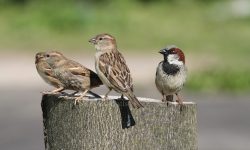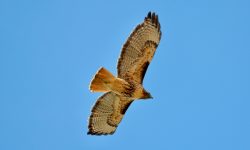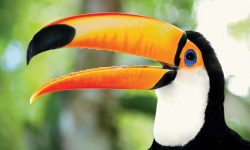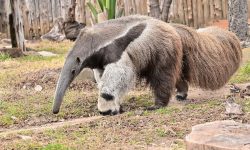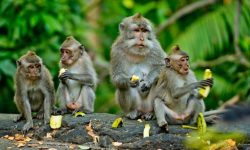The Red Junglefowl, scientifically known as Gallus gallus, is the wild ancestor of the domestic chicken and a bird full of evolutionary wonders. Found throughout Southeast Asia’s dense forests, this species exhibits remarkable biological traits that reflect both ancient survival mechanisms and the roots of modern poultry. Let’s explore twelve of the most fascinating characteristics that make Gallus gallus a subject of scientific intrigue and ecological importance.
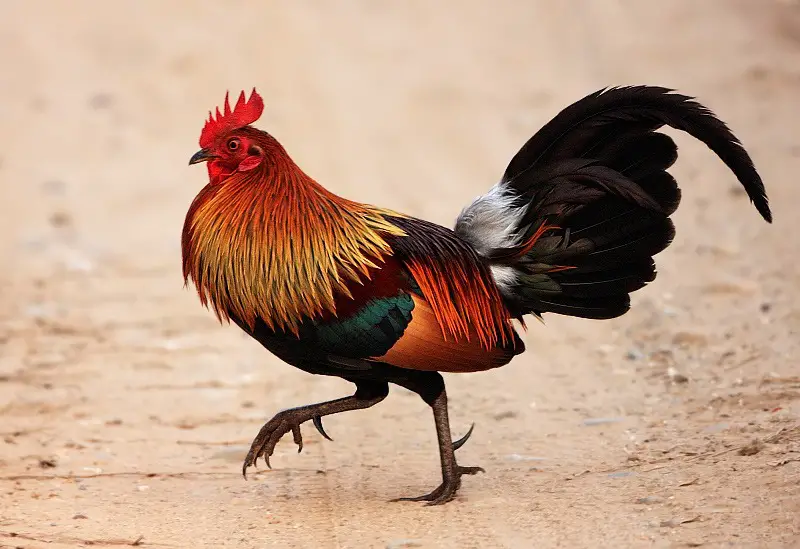
1. Striking Sexual Dimorphism
A vivid contrast between radiance and camouflage
One of the most visually captivating features of Gallus gallus is its dramatic sexual dimorphism—where males and females appear so different they could almost belong to separate species. The male Red Junglefowl, or rooster, is a walking palette of brilliance. His plumage gleams under dappled sunlight, shimmering in hues of crimson red, fiery orange, and molten gold. His hackle feathers cascade like flowing silk down his neck, catching metallic flashes of green and violet with every subtle movement. The most iconic feature, however, is his long, scimitar-shaped tail feathers—arched like ribbons of obsidian, each one edged in iridescence that shifts with the angle of light.
The hen, on the other hand, wears the forest itself. Her plumage is a mosaic of earth-toned browns, soft tans, and speckled grays—perfectly patterned to mirror dry leaves and forest debris. This muted coloring isn’t merely aesthetic; it’s a finely tuned adaptation for survival. When nesting or brooding, she disappears almost completely into the underbrush, her stillness and cryptic feathering shielding her and her vulnerable clutch from predators. While the male’s dazzling display is a beacon of dominance and reproductive fitness, the female’s subdued elegance is a masterclass in natural camouflage.
This stark contrast between the sexes serves different but equally critical purposes: attraction versus concealment, visibility versus invisibility, flair versus stealth. It’s nature’s dual strategy, embodied in one remarkable species.
2. Ancestral Origin of the Domestic Chicken
From shadowy forests to backyard coops
Long before the clucking of hens echoed through farmyards across the globe, their ancestors scratched the leaf-littered floors of Southeast Asia’s dense tropical forests. The humble domestic chicken (Gallus gallus domesticus), now numbering in the tens of billions, traces its evolutionary roots back to the wild and elusive Gallus gallus—the Red Junglefowl. This remarkable species, still thriving in parts of India, Myanmar, Thailand, and Vietnam, represents the living blueprint from which all modern chickens have descended.
Genetic and archaeological evidence points to domestication beginning around 8,000 years ago, likely driven by early agricultural societies that were drawn to the junglefowl’s regular egg-laying habits, docile temperament, and social behavior. Over generations, humans selected for traits like tameness, increased size, and egg productivity, gradually shaping the familiar birds we know today. Yet despite these modifications, the domestic chicken still carries the genetic fingerprints of its wild ancestor.
In fact, many behaviors and instincts remain surprisingly intact. Even in urban backyards or industrial poultry farms, chickens exhibit junglefowl-like traits: dust bathing, pecking order social hierarchies, alarm calls, and nesting preferences. In rural areas of Southeast Asia, it’s not uncommon to see semi-wild populations of Gallus gallus mingling with free-ranging domestic chickens—interbreeding, foraging together, and blurring the line between wild and tame.
The evolutionary journey of the domestic chicken is a story not just of adaptation and survival, but of deep-rooted connection between humans and birds. And it all began with the rustling of feathers under a jungle canopy.
3. Elaborate Courtship Displays
Rituals of attraction, power, and precision
In the courtship world of the Red Junglefowl, the dance of love is as much about strategy as it is about spectacle. Male Gallus gallus don’t just passively hope to attract a mate—they perform. Their courtship displays are choreographed rituals, honed by millions of years of evolution to captivate, impress, and persuade.
A typical display begins with a series of rhythmic wing flaps and deliberate struts, often accompanied by short bursts of crowing—sharp and confident, meant to proclaim the male’s presence and dominance across the forest floor. The rooster then engages in a fascinating behavior known as “tidbitting”: he lowers one wing to the ground, arches his neck, and circles the female in semicircular patterns, all while producing a rapid series of vocal clicks and clucks. This sound mimics the discovery of food and is often paired with actual pecking at the ground, as if to say, “Come closer—I provide.”
But this performance is far more than empty theater. Every movement, sound, and feather flick serves a communicative function. The vibrancy of his plumage reflects his health and genetic quality; the fluidity of his dance suggests agility and strength; the precision of his timing reveals experience. These displays are carefully scrutinized by the hen, who evaluates each element before choosing whether to mate.
Courtship in Gallus gallus isn’t just about flair—it’s a complex negotiation of power, intention, and promise. Through this ritualized behavior, males not only attract mates but also establish territorial dominance and deter rival suitors. It’s a feathered performance where survival and reproduction hang in the balance, and only the most persuasive dancers earn the right to pass on their genes.
4. Silent Flight and Agile Maneuvering
Precision escapes through the forest shadows
Although Gallus gallus is often seen foraging on the forest floor, don’t mistake it for being grounded. When danger strikes—be it a prowling predator or sudden disturbance—this bird transforms from cautious ground-dweller into a flash of feathers and force. In a matter of seconds, it can launch vertically into the air with startling speed and agility, vanishing into the canopy above before most threats even react.
Unlike long-distance fliers like doves or hawks, the Red Junglefowl’s wings are short, rounded, and built for burst power. This compact wing design allows it to push off the ground explosively, threading its way through dense underbrush and tangled branches with a kind of muscular precision. It doesn’t soar, it surges—rising in a flurry of leaves, wings flapping powerfully in tight succession, and then gliding briefly to a perch where it can catch its breath and survey the forest.
Their takeoffs are often silent and sudden, thanks to refined coordination between wing strokes and body posture. And when they ascend into the lower branches of trees—sometimes up to 3 or 4 meters high—they find more than just safety from ground predators. These elevated spots double as roosting sites, where the birds sleep in relative peace through the night, out of reach from snakes, cats, and other nocturnal hunters.
This remarkable maneuverability has been crucial to the species’ survival. In the tangled chaos of tropical forests, escape doesn’t depend on endurance—it depends on reaction time, direction control, and the ability to vanish vertically at a moment’s notice. For Gallus gallus, the air is not for migration, but for evasion and elevation.
5. Sharp Vision and Color Perception
Eyes designed for survival—and social strategy
To navigate the dynamic world of the forest floor, Gallus gallus depends not just on its agility or camouflage, but on an exceptionally advanced sense: vision that surpasses our own. Far from simple sight, the Red Junglefowl’s eyes are finely tuned instruments, evolved to detect movement, color, light, and even details invisible to the human eye.
Their eyes possess tetrachromatic vision, meaning they have four types of cone cells—compared to our three. This allows them to see a wider range of colors, including ultraviolet (UV) light. Where we see only a plain patch of feathers, a junglefowl may perceive shimmering UV patterns that reveal hidden cues about health, age, or reproductive status. These visual signals play a crucial role in mate selection, helping females detect the most genetically fit males through subtle variations in feather iridescence or skin tone.
But vision in Gallus gallus is not limited to courtship. Their sharp eyes are also a first line of defense. They can detect minute movements in the undergrowth—whether it’s a rustling snake or the twitch of a predatory cat’s tail—often reacting before a threat fully emerges. Their ability to focus on both ground-level detail and far-off motion gives them a survival advantage in the chaotic textures of tropical foliage.
Even in social settings, vision governs the flock’s dynamics. Eye contact, head posture, and feather orientation convey dominance, submission, or challenge. Through keen observation, individuals determine their place in the pecking order without constant physical confrontation.
In the jungle, where danger hides in shadows and success lies in split-second decisions, seeing more—and seeing better—makes all the difference. For Gallus gallus, vision is more than a sense; it’s a strategy written into their very biology.
6. Complex Vocal Repertoire
A language of clucks, crows, and coded calls
To the untrained ear, the voice of Gallus gallus might seem limited to the rooster’s crow—a sharp, rhythmic call that greets the sunrise. But within the chorus of the forest, this bird speaks an entire language of survival, bonding, and intention. Its vocal repertoire is one of the most complex among ground-dwelling birds, filled with nuance, emotion, and meaning that goes far beyond the iconic cock-a-doodle-doo.
Roosters use their crows not only to mark territory, but also to assert dominance, attract mates, and even respond to environmental cues like approaching rain or the presence of predators. Yet this is just the overture. Males also produce tidbitting calls—a rapid series of short, enticing clucks—during courtship or when discovering food, often paired with ritualized movements to catch the attention of nearby hens.
Hens, in turn, possess a soft but expressive range of sounds. Their maternal vocalizations include gentle purrs, soft trills, and contented cooing, especially when communicating with chicks. This gentle soundscape creates a secure auditory bond between mother and offspring, reinforcing safety and recognition even in visually obscured environments like dense underbrush.
Even the youngest members of the flock—newly hatched chicks—enter this vocal world early. When separated or frightened, they emit sharp distress peeps, instantly triggering defensive behaviors in the hen. She may spread her wings, issue warning calls, or lead the chick to safety. These interactions are not accidental; they reveal a deeply ingrained social intelligence and responsiveness to emotional tone.
Warning calls among adults are another example of precision communication. Different predators elicit different alarms: aerial threats like hawks trigger upward glances and group freezing, while ground predators result in abrupt dashes for cover. Each vocalization is coded and understood, forming an invisible web of communication that enhances the group’s ability to react as one.
In the dense, unpredictable environment of the jungle, silence is not always safety—and noise, when used wisely, can be a lifeline. Through an intricate system of calls, murmurs, and cries, Gallus gallus maintains social cohesion, defends against danger, and ensures the next generation is nurtured in a world where every sound counts.
7. Diurnal Roosting Behavior
By day they forage, by night they vanish into the trees
As the sun slips below the jungle canopy and shadows stretch across the forest floor, Gallus gallus undergoes a quiet but vital transformation. The bird that spent its day scratching among leaves and chasing insects now becomes an agile tree-dweller. In a flurry of feathers and swift wingbeats, the Red Junglefowl ascends into the branches—trading ground for elevation, and exposure for safety.
Though these birds are not true arboreal species, they possess just enough flying power to launch themselves several meters off the ground, seeking out roosting spots high in trees or bamboo clusters. These perches offer a key advantage: escape from the host of nocturnal predators that patrol the forest floor. For junglefowl, nightfall brings threats from pythons, civets, and even wildcats—and the trees are their fortress in the sky.
Roosting is more than just survival. It is a deeply social behavior, often carried out in small, stable groups that fly up together and settle side by side on shared branches. These communal sleeping arrangements strengthen flock cohesion and reinforce pecking order hierarchies, as dominant individuals often claim the highest or most central positions. The closeness of bodies also provides warmth during cool tropical nights, and shared vigilance increases the chance that one bird will detect danger early.
Interestingly, this behavior is retained in many domestic chickens when allowed to live in semi-natural conditions. Even backyard hens, given access to trees or high perches, will instinctively seek altitude at dusk—an echo of their wild ancestry still embedded in their DNA.
In the daily rhythm of Gallus gallus, night is not a time of passivity—it is a calculated retreat into the treetops, where rest is taken under the soft swaying of branches and the quiet watch of the stars. It’s a ritual of survival, played out one roosting flight at a time.
8. Seasonal Breeding and Nesting
Timing new life to the forest’s secret rhythms
In the world of Gallus gallus, reproduction is not a year-round endeavor—it is a finely tuned response to the pulse of the forest. As the dry season softens into monsoon rains and daylight lingers longer each day, subtle changes in temperature, humidity, and resource abundance whisper that it is time. The breeding season begins not with a signal from a calendar, but with the scent of ripening fruit, the chorus of insects, and the renewed bustle of life on the forest floor.
These environmental cues—particularly increased food availability and longer daylight hours—act as triggers for courtship, mating, and ultimately nesting. Once fertilized, the female embarks on one of the most vulnerable yet critical phases of her life: the construction and defense of her nest.
Unlike arboreal birds or elaborate nest builders, the Red Junglefowl keeps things simple. She selects a shallow depression in the ground—often tucked beneath a bush, near tree roots, or among tall grasses—and lines it with dried leaves, feathers, and soft vegetation. These natural materials not only provide insulation but also contribute to the nest’s camouflage, making it nearly indistinguishable from the surrounding forest floor.
A typical clutch consists of 4 to 8 eggs, pale cream or buff in color, and laid over the course of several days. Once the clutch is complete, the hen enters a state of quiet dedication. For the next 21 days, she incubates the eggs almost continuously, rarely leaving the nest except to feed briefly or reposition. Her muted, earth-toned plumage becomes her first and most effective defense—allowing her to vanish in plain sight, even as predators move just meters away.
During this period, the male often remains nearby, patrolling the territory and issuing alarm calls if danger approaches. Though he does not participate in incubation, his presence may deter smaller threats or distract larger ones.
Timing is everything. Hatching when insects are abundant and cover is thick gives the chicks their best chance at survival. In the natural orchestra of the jungle, Gallus gallus breeds in rhythm with rain, sun, and soil—each chick that emerges a living note in the seasonal song of regeneration.
9. Feather Structure with Iridescent Sheen
When light becomes language, and beauty becomes signal
At first glance, the feathers of a male Gallus gallus may simply appear colorful—but take a closer look in the shifting sunlight of a forest clearing, and you’ll see something far more mesmerizing: a kaleidoscope of living light. His plumage doesn’t just reflect color—it bends it, refracts it, and reshapes it, casting flashes of emerald, sapphire, and bronze with every subtle movement.
This dazzling display is not the result of pigments alone. Instead, it comes from a specialized microstructure within the feather’s surface. Tiny, plate-like layers of keratin and air pockets interact with incoming light, splitting and scattering wavelengths to produce a phenomenon known as iridescence. Much like the shimmer on a peacock’s tail or a soap bubble in the sun, the effect is dynamic—colors shift depending on angle, distance, and intensity of light.
In Gallus gallus, this structural brilliance is most pronounced on the neck hackles, saddle feathers, and long tail plumes of the male. These feather regions are designed not just for beauty but for maximum visibility during courtship rituals. As the rooster struts, fans his tail, or performs tidbitting displays, the iridescence catches the light at just the right angles—turning his body into a living flare of color.
For the female, these shimmering signals serve as a form of biological assessment. A rooster with vibrant, evenly colored feathers indicates good health, strong genetics, and an absence of parasites or disease—all critical qualities in a mate. Dull, ragged, or poorly kept plumage, on the other hand, suggests weakness or illness and is often ignored.
Beyond reproduction, this iridescence may also serve subtle functions in social dynamics, helping individuals recognize each other or establish visual dominance in a hierarchy. But above all, it is a visual symphony where physics meets evolution—where each glowing feather is not just beautiful, but strategic.
In the shaded world of the jungle, where shadows shift quickly and predators lurk silently, to shine so boldly is both a risk and a declaration. For Gallus gallus, beauty is never wasted—it is weaponized light, turned toward the goal of survival through attraction.
10. Hierarchical Social Order
Where dominance dances before violence—and every bird knows its place
In the seemingly chaotic life of a forest-dwelling Gallus gallus flock, there is hidden structure—an invisible but ever-present social ladder that governs who eats first, who mates, and who sleeps on the safest perch. This system is known, quite literally, as the pecking order, a term born from the behavioral observations of these very birds and still used today to describe human social dynamics.
Within each flock, individuals occupy specific ranks based on age, size, sex, and strength. At the top sits the dominant rooster, often the boldest and most visually impressive male. He struts with confidence, crows the loudest, and guards the group’s territory with unwavering vigilance. Below him are subordinate males, each acutely aware of their position—and careful not to overstep unless ready to challenge.
Females, too, maintain their own hierarchy. The dominant hen enjoys first access to food and prime nesting sites, while lower-ranking females wait their turn or forage farther from the group. This isn’t chaos—it’s a sophisticated, dynamic system that allows the group to function with surprising harmony.
Conflicts, when they arise, are rarely all-out brawls. Most disputes are resolved through ritualized displays: feather fluffing, wing spreading, head bobbing, and eye-to-eye confrontations. These visual signals often defuse tension before physical fights occur. However, when status is truly at stake—such as a young male rising in confidence—brief but intense combat can erupt, with sharp claws, strong legs, and pecks delivered in bursts of power and precision.
Once the pecking order is established, the benefits are clear. Resources are distributed with minimal squabbling, mates are claimed without constant battles, and the group operates under a quiet yet strict code of conduct. It’s a self-regulating society, where rank determines rights, and respect—however grudging—is maintained through posture and presence.
Even in domesticated chickens, traces of this wild social structure persist. Watch a backyard flock for just a few minutes, and you’ll see it: the sideways glare, the defensive stance, the submission crouch. It’s instinctual, ancient, and elegantly efficient.
In the world of Gallus gallus, power isn’t just taken—it’s displayed, earned, and constantly reaffirmed, one calculated step at a time.
11. Omnivorous and Opportunistic Diet
Foragers of the forest floor—and masters of adaptation
Beneath the towering trees and tangled undergrowth of Southeast Asia, Gallus gallus moves with purpose. Head low, eyes scanning, feet scratching through leaves and soil—it is a natural-born forager, guided by instinct and sharpened by experience. Unlike many birds with narrow dietary needs, the Red Junglefowl boasts a highly flexible, omnivorous palate, perfectly suited to the unpredictable rhythms of the forest.
Their diet is a patchwork of whatever the environment provides. Seeds and grains form the base of their intake, especially during dry seasons when flowering plants drop their bounty onto the forest floor. With swift, repeated scratches, junglefowl unearth buried treasures: tiny seeds, tender shoots, and the occasional sprouting tuber. When the rains return and insect life explodes, these birds switch strategies. They dart after beetles, snatch ants mid-stride, pluck caterpillars off leaves, and even dig for worms and grubs beneath rotting logs. No opportunity is wasted.
They also eagerly consume fallen fruit, pecking at figs, berries, and the overripe offerings of jungle trees. In coastal or wetland edges, some populations have been observed feeding on crustaceans or even small amphibians. This opportunistic approach not only expands their nutritional intake but also enhances their survival across a wide variety of habitats.
This dietary adaptability is one of the key reasons Gallus gallus has thrived not only in wild forests but also in semi-wild or human-altered landscapes. In rural villages, they forage freely in rice paddies, gardens, and compost heaps. They adjust seamlessly to seasonal shifts, agricultural cycles, and even the presence of human food waste. Where resources are scarce, they get creative—where they are abundant, they flourish.
Chicks are quick to learn these foraging habits by mimicking the hen, who softly clucks to indicate edible finds. This maternal guidance ensures the next generation quickly learns what to eat, where to find it, and how to get there first.
In a world where survival often favors specialization, Gallus gallus proves the power of flexibility. To eat anything is to go anywhere—and these birds go wherever the food leads them.
12. Hybridization with Domestic Chickens
Where wild instincts meet domestic legacy
In the blurred boundary between forest and farmland, where chickens roam freely and the call of the wild still echoes, a subtle but powerful phenomenon is unfolding: the hybridization of Red Junglefowl and domestic chickens. As Gallus gallus ventures closer to villages and cultivated lands—and as backyard hens and roosters escape into nearby brush—gene pools begin to mix, creating birds that straddle two evolutionary worlds.
This hybridization isn’t a new event; it likely began thousands of years ago during the early stages of domestication. But today, as human settlements expand and forest cover shrinks, encounters between wild and domestic birds are becoming more frequent—and more consequential.
The resulting hybrids often display a fascinating blend of characteristics. Many retain the sharp eyesight, quick reflexes, and strong flight abilities of their wild parentage—traits essential for evading predators in untamed environments. At the same time, they may exhibit more varied plumage, with colors ranging from the rich, iridescent sheen of wild roosters to the buff, barred, or white patterns seen in domestic breeds. Comb shapes also vary, from the classic upright red comb of the domestic chicken to smaller, darker versions closer to the junglefowl norm.
Behaviorally, hybrids may still show shyness and wariness, fleeing at the first sign of human approach. Yet in some cases, they become semi-tame—feeding at the edge of farms, following human activity, and even nesting near dwellings. This behavioral plasticity reflects a genetic legacy shaped by both natural selection and artificial influence.
However, this blending of bloodlines is not without concern. Conservationists worry that continued hybridization is eroding the genetic purity of wild Gallus gallus populations. In places like India, Thailand, and parts of Malaysia, pure junglefowl are becoming increasingly rare. With each generation of hybrid offspring, the distinct traits that define the species—its call, its flight strength, its courtship behavior, even its subtle ecological roles—may be diluted.
Efforts to preserve true wild populations now include genetic monitoring, habitat protection, and restrictions on free-ranging domestic chickens near protected forests. The goal is not to undo history, but to protect what remains wild—to ensure that Gallus gallus, in its original form, continues to thrive as a symbol of avian evolution, not just domestication.
In this quiet genetic dance between the wild and the tame, the stakes are high—and the outcome will shape not just the bird itself, but our understanding of where nature ends and human influence begins.
Conclusion
Gallus gallus is far more than the wild cousin of the domestic chicken—it is a living blueprint of avian adaptation, communication, and survival. From its radiant feathers and sharp intelligence to its social complexity and ecological resilience, this species represents a dynamic chapter in the story of evolution. As human expansion continues to encroach on natural habitats, understanding and conserving Gallus gallus becomes not just a biological interest, but a responsibility.


